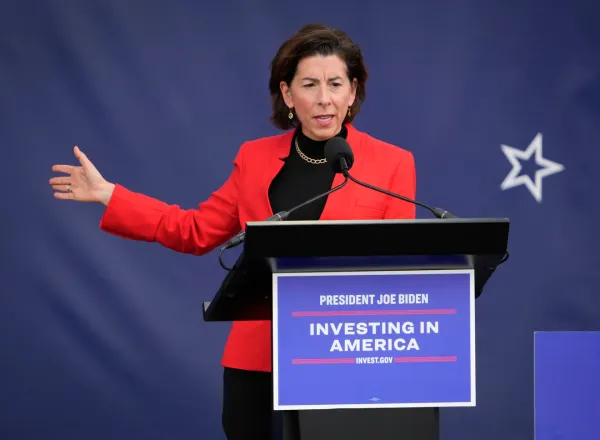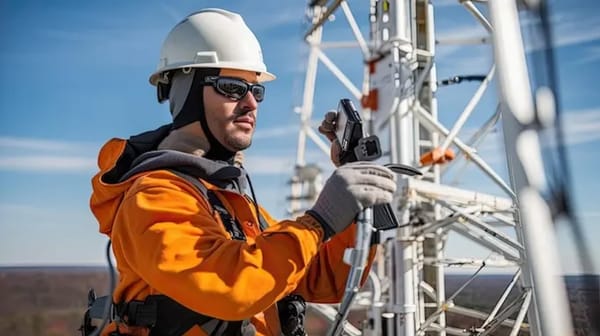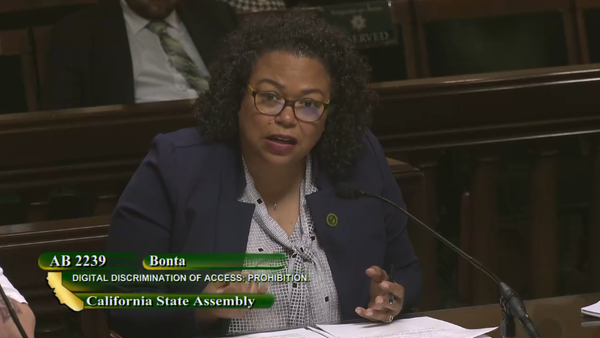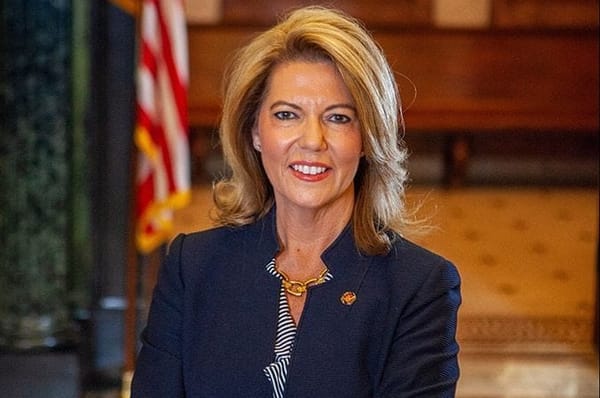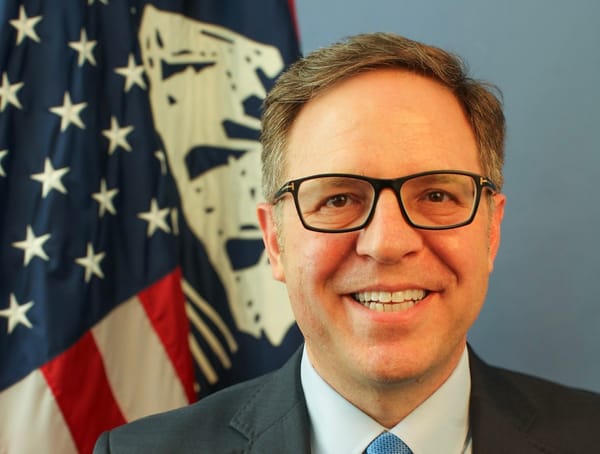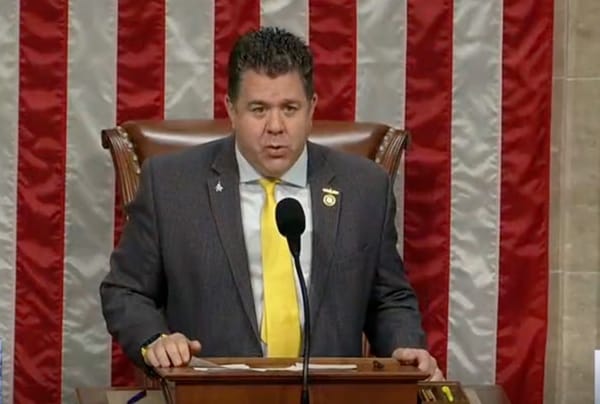Experts Debate Civil Rights Issues in Context of Broadband
WASHINGTON, January 25, 2010 – Broadband experts discussed civil rights issues surrounding a speedy internet and how best to close the digital divide at an event last week hosted by the Minority Media & Telecom Council at Howard University.
Editor’s Note: This story has been corrected. See below.
WASHINGTON, January 25, 2010 – Broadband experts discussed civil rights issues in the context of how best to close the digital divide at an event last week hosted by the Minority Media & Telecom Council and held at Howard University.
Blair Levin, an FCC alumni who has been tapped to oversee the current plans to get broadband throughout the nation, said he wants to ensure that the policies for the plan will not contribute to a second-class citizenship and digital literacy will not be denied to anyone.
Levin told attendees at the Broadband and Social Justice Summit that broadband to certain communities will not automatically remove the digital divide, but will remove the barrier to creating more equal opportunity. He noted that connecting those previously excluded from the internet can bring real results in education, employment, the nation’s physical health, political participation and civic engagement.
During the 2008 presidential campaign, 74 percent of internet users involved themselves in the online political process, he noted.
“When we think about civic engagement, we must recognize that the internet is a library. It’s a television. It’s a telephone and a public square,” said Levin. “The uncomfortable questions we have to come to terms with however is, why do fewer than 40 percent of households that make under $20,000 an year have broadband at home, while 80 percent subscribe to premium television?”
While part of the answer lies in affordability, another part lies in the importance of communities adopting technologies together. As Levin joked, e-mailing yourself is not that much fun and Skyping yourself is downright depressing.
“The TV/internet gap also suggests concern about the skills needed to participate in what the internet can offer,” he said.
Levin announced three ways to address the challenge of bridging the gap – social infrastructure, social innovation and social purpose media.
Levin wrapped up his opening statements with a quote by Martin Luther King Jr.” “There can be no gainsaying about the fact that a great revolution is taking place in the world today…That is, a technological revolution with the impact of automation and cybernation…Modern man through scientific genius has been able to dwarf distance. Through our genius we have made this world a neighborhood. And yet we — we have not yet had the ethical commitment to make of it a brotherhood. But somehow, and in some way, we have got to do this.”
FCC Commissioner Mignon Clyburn gave her keynote address during a packed lunch reception, saying broadband is a necessity not a luxury.
She stressed that “it is important to approach the adoption challenge from the point of view of the non adopters, and not from a set of pre conceived notions of what we assume their needs are.”
Clyburn called this challenge the “last half mile”- the distance between each person who has not integrated broadband into their lives and the physical infrastructure right outside their door.
She stirred the audience when she spoke about the ability of broadband to deliver economic empowerment and noted that some new FCC data show that the percentage of people of color adopting broadband in their homes is rising again.
“How can we ensure that current low barriers to entry remain low in order to prevent yet another communications model that has people of color once again on the outside looking in?,” she asked.
Broadband Education Literacy and Civic EngagementDuring a panel discussion, Nicole Turner-Lee, vice president of the Joint Center for Political and Economic Studies, said civic engagement is defined by communities organizing and accessing information that is pertinent to their communities. She focused on the need to mash literacy education goals with broadband deployment in order to create a multiplier effect.
Jane Cabarrus, president of the North Hampton County Branch of the NAACP, said there’s no broadband in her home in Weirwood, Va., adding that a combination of many deployment and digital literacy programs will be needed to give her community equal opportunity.
David Honig, president and executive director of the MMTC, added that it’s necessary to address the differences in subsets of people.
Russel Frisby, a partner at Stinson Morrison Heckler, reiterated the importance of incentivizing the private sector to aid in the government’s efforts.
Moustafa Mourad from One Economy said for disadvantaged citizens to adopt, they must find their own value in broadband. “People will only participate when issues affect them in a visceral way,” he said.
Former FCC Commissioner Deborah Powell Tate recommended extending funding for the Universal Service Fund to broadband. She also believed that the agency would be making great strides to upgrade the e-Rate, Lifeline and Link Up programs. She also added that since children are the early adopters of broadband, schools should allocate funding to teach children how to navigate the web in a safe way.
Broadcasting and Journalism in a Broadband WorldThe second discussion group began with comments from Richard Prince, editor of Journal-isms, at the Maynard Institute of Journalism Education. Price pointed to the efforts of the Knight Foundation in creating enriched online environment with wiki tools for access to local public documents.
Janette Dates, the dean of Howard University School of Communications, said that while Facebook and Twitter may be forms of communications, they cannot be referred to as journalism. Journalists must well trained and know how to access information that is fair and balanced, she said.
The panel also discussed digital media literacy, where Prince pointed out the vast amount of information available but the lack of tools to evaluate it properly. Honig suggested that broadband and media research and science should be a 10th grade level science.
Jane Mago, general counsel for the National Association of Broadcasters, and Fernando LaGuarda, the vice president of external affairs and policy counselor for Time Warner Cable, agreed that there is still a sustainable business model in local news. Companies need to look to the local cable news models and think about where the internet creates opportunity, they said.
Andrew Schwartzman from the Media Access Project believes that some model of government subsidies might be important for this era of new journalism, almost like the public broadcasting subsidy. He pointed out that in Europe, government subsidies for journalism institutions are normal.
John Lawson from ION Media Networks said wireless penetration among minorities is very high. He added that with new technologies developed by firms such as LG and Samsung, entrepreneurs have figured out how to deliver TV signals to cell phones traveling up to 100 miles an hour.
Net Neutrality and Digital DivideThe afternoon panel addressed the digital divide and preserving an open internet. Honig noted that only 63 percent of the country has true access to broadband at home. He asked where the money needed to close the digital divide should come from.
The group Free Press has said that it would take approximately $50 billion to provide traditional broadband to every home. Honig also raised the question of whether broadband should be considered a fundamental right.
Rick Chessen, senior v.p. of law and regulatory policy at the NCTA, believed that there was more ground for agreement on the principle of transparency than there was on the principle of nondiscrimination. He believes the crux of the argument behind nondiscrimination is tring to dtermine who is responsible for paying for the necessary improvements to the Internet, adding that it likely could be consumers who absorb these costs.
The summit ended with statements from Lawrence Strickling, assistant secretary for communications and information at the National Telecommunications and Information Administration.
Strickling reminded the audience about the second round of funding for broadband grants and the new notice for available funds from NTIA and the Rural Utility Service. He also praised the development of Broadband Match at match.broadbandusa.gov. He explained how the website is essentially e-Harmony for broadband. The site lets applicants for Recovery Act grants find potential other partners. Large-scale institutions can pair with community centers, and infrastructure providers can pair with content providers.
Editor’s Note: Owing to an editing error, this article orginally stated that Commissioner Clyburn said that broadband was luxury, not a necessity. In fact – as the article now reflects – Clyburn said the opposite: broadband is a necessity, and NOT a luxury.


